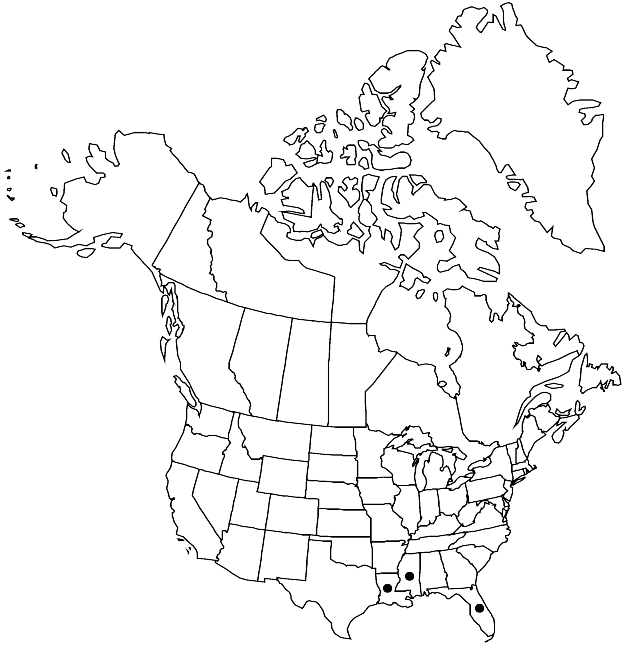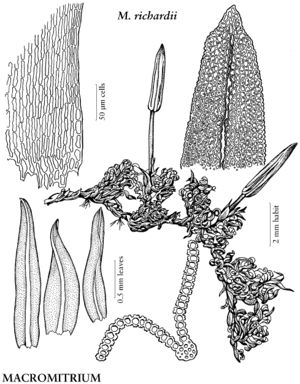Macromitrium richardii
Sp. Musc. Frond. Suppl. 2(2,1): 70, plate 173 [bottom]. 1826.
Stems with branches to 1 cm, simple or 2-fid. Branch leaves 0.7–1.8 mm; basal laminal cells tuberculate or smooth, walls thick; distal cells bulging mid leaf, grading to papillose-bulging at tip. Seta dextrorse. Capsule with exothecial cells not differentiated; stomata at capsule base; exostome teeth rudimentary, delicate, pale yellow. Spores 22–32 µm, densely papillose.
Phenology: Capsules mature spring.
Habitat: Branches and trunks of trees
Elevation: low elevations
Distribution

Fla., La., Miss., Mexico, West Indies, Central America, South America.
Discussion
Macromitrium richardii is distinguished from other mosses with similar creeping stems and erect branches by its non-rugose, inrolled leaves and uniformly elongate basal laminal cells. The papillose-bulging distal laminal cells and autoicous sexual condition distinguish M. richardii from other species of Macromitrium in the tropical portions of its range.
Selected References
None.
